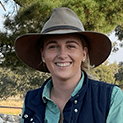Navigating the world of genetic testing and its applications in the livestock industry can seem like a daunting task. The abundance of scientific jargon and complex terminology can easily make one feel as though they need a PhD to get started. If you’ve found yourself in this boat, rest assured! We’ve done the years of study so that you don’t have to.
In this blog post, we are shedding light on one crucial element at the core of genomic testing: single nucleotide polymorphisms, or SNPs. Much like our previous blog on genes, genetics and genomics, we aim to provide you with a clear, accessible resource that you can trust. Feel free to refer to our earlier post for a refresher on some of the terminology we will use. Now, let’s dive into the world of SNPs and discover why they are an indispensable tool for trait selection in the livestock industry.
Frequently asked questions
What is a single nucleotide polymorphism (SNP)?
SNPs occur as tiny variations within the genetic code of organisms. Imagine the set of genetic instructions that make up an animal, known as the genome, as a book. A single sentence of that book is a gene, and a single letter of a word is a single nucleotide. Examining SNPs is like looking for spelling differences in each animal’s book. Just as changing one letter in a word can alter the meaning of a sentence, in genetics, even a single nucleotide change can completely alter an animal’s gene expression and traits – from the colour of their coat, susceptibility to disease, or even the likelihood of producing twin offspring!
What is trait selection?
Trait selection is the deliberate process of choosing animals that meet specific breeding objectives, to pass on their desired genetics, and subsequently traits, to their progeny. It is important to have an understanding of the heritability of the traits of interest, taking into consideration the preservation of genetic variations, and considering both visual and genetic assessments when performing trait selection. For example by collecting data on the amount of milk produced by each cow over successive lactation cycles and selecting individuals with consistently high production will drive up milk yield.
How can SNPs improve your breeding decisions?
SNP genotyping is the process of determining what exactly each animal’s unique genetic code is at a large selection of spots in their genome – typically 50,000 different spots! This vast amount of information can be used to confirm parentage, preserve diversity in genetic variation, predict what traits animals will have, assess disease susceptibility, and inform breeding plans to move towards specific breeding objectives.
For example, imagine we’re managing a flock of merino sheep. Through SNP analysis, we can identify specific individuals that carry the FecB (Booroola) variant, which is associated with a higher likelihood of ewes giving birth to twins. When it comes to breeding, we can intentionally select these animals to increase the frequency of the FecB gene within the flock. Over time, as the frequency of this trait increases, you should see an increase in litter sizes within the flock, which can have economic advantages.
The role of XytoVet in trait identification
Our commitment to improving the well-being and productivity of your herds and flocks drives us to share our knowledge and expertise.
If you have further questions about how to identify SNPs, trait selection, or how we can assist you in achieving your breeding objectives, don’t hesitate to reach out.











